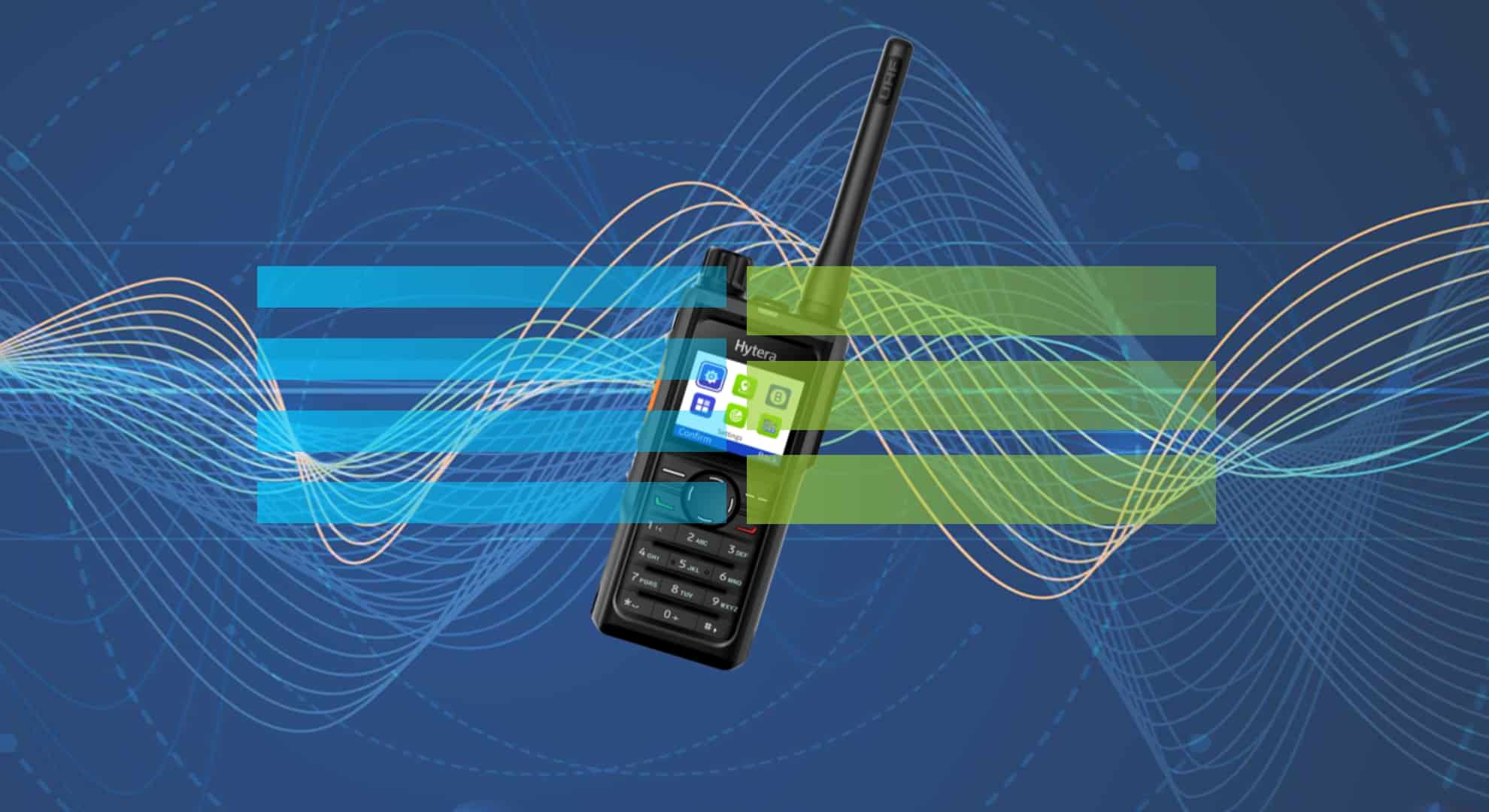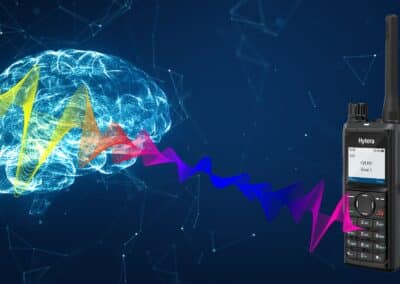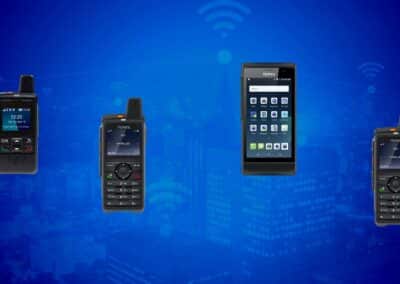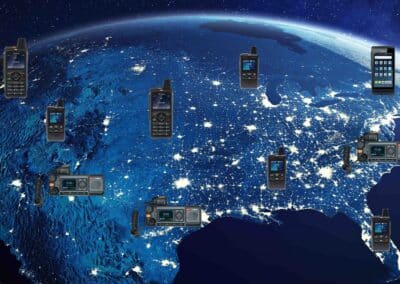DMR FREQUENCIES, CHANNELS, GROUPS, AND ZONES
Two-way radios utilize radio frequencies, channels, groups, and zones to ensure clear and effective communication between individuals or groups within a specific range. Understanding the differences between these terms is critical to use two-way radios effectively.
Radio frequencies refer to the range of electromagnetic waves used to transmit and receive signals in two-way radios. These waves are measured in Hertz (Hz), and two-way radios typically operate in the range of 136-174 MHz VHF and 400-470 and 400–527 Megahertz (MHz) UHF. It’s important to note that radio frequencies are limited, and in the United States, the Federal Communications Commission (FCC) regulates the allocation and use of radio frequencies.
Channels are different frequencies within a radio frequency range. Two-way radios can use multiple channels to communicate with different individuals or groups. Each channel has a unique frequency, allowing for communication to occur without interference. The number of channels a two-way radio has varies depending on the make and model.
DMR radios adhere to specific frequency spacing, often referred to as channel bandwidth or channel spacing. The 12.5kHz frequency spacing is a standard within DMR systems, emphasizing the need for efficient spectrum utilization and compatibility with existing analog systems. This spacing enables more channels to be accommodated within the limited frequency spectrum, thereby maximizing communication capacity. It also ensures compliance with regulatory requirements, as many jurisdictions mandate the use of narrowband channels to alleviate spectrum congestion.
Groups (also known as Talk Groups) refer to specific individuals or teams within a two-way radio communication network. A DMR group, also called a talk group, is a method of grouping or assembling multiple users (Radio IDs) to a single contact. A group is simply a number of users that need to talk to each other and hear all the communications in that group.
Two-way radios provide instant group calls to multiple users with the press of a PTT button on a radio or from a dispatching application. Groups can be made up of individuals with different roles or tasks in the same organization. Using groups on a two-way radio can help minimize distractions by ensuring that only the relevant parties are involved in the conversation.
Call groups can be set up based on All Call and Emergency calls, types of employees (supervisors, administrators, etc.), remote employees and mobile service fleets, employee locations, type of projects, etc. Radio users can belong to multiple groups as shown in the overlapping areas.
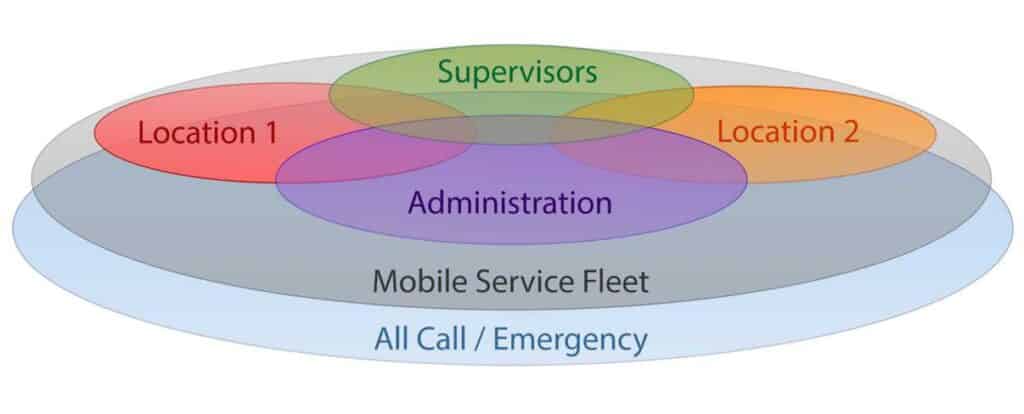
Zones are a way of organizing channels and groups within a two-way radio. They enable combining channels and groups together based on geographic location or task. For example, a construction site may have different zones for different areas of the site or different tasks, such as excavation, framing, or finishing. This organization helps to streamline communication and ensures that individuals or groups are only listening to relevant information.
Understanding the different elements of DMR radio technology, including frequencies, channels, call groups, and zones, is essential for optimizing communication efficiency and productivity. By leveraging the appropriate frequency band, assigning channels and call groups, and organizing them within zones, businesses and organizations can tailor their DMR systems to meet their specific operational requirements.
Contact Hytera to learn more about Hytera DMR Radios and Push-to-Talk over Cellular Radios.
